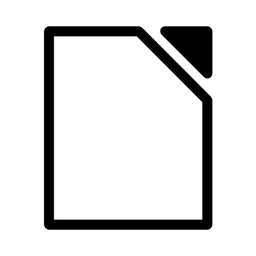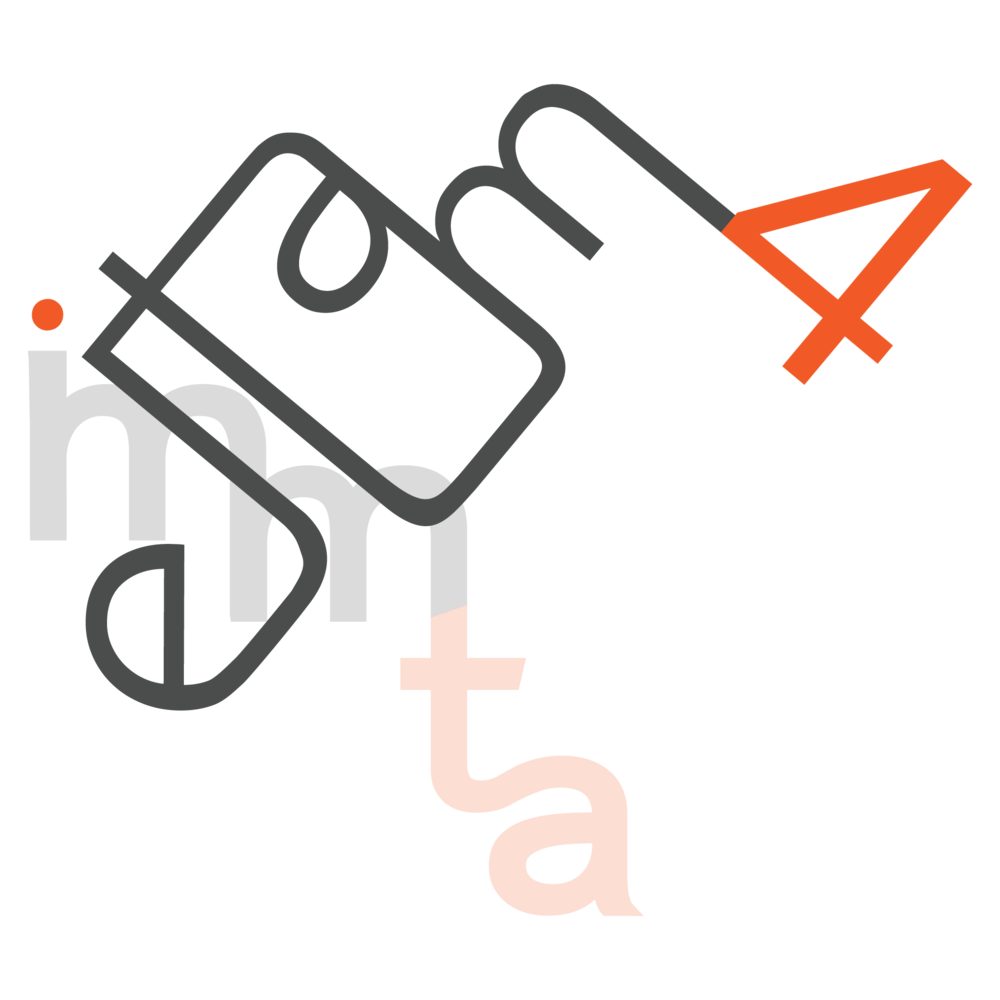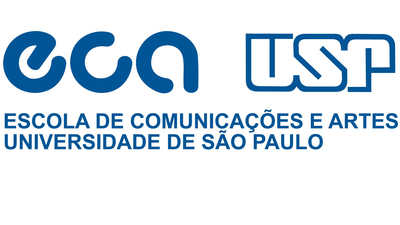Call for papers and technical standards for submission
Call for papers for the Communications Sessions
New submission dates: from Mar. 05 toSubmission address: eitam4.submissoes@gmail.com
Submission guidelines
The articles submitted to the IV International Meeting of Theory and Musical Analysis, EITAM4, must conform to the following norms:- The work should be adapted to the format of the following templates:
 .odt / .ott |
.odt / .ott |
 .docx / .dotx |
.docx / .dotx |
 .zip |
.zip |
 LaTeX@OverLeaf
LaTeX@OverLeaf
- Articles written in Portuguese, Spanish, English or French are accepted.
- Papers must be submitted without any identification of the author(s). In case of acceptance, the author should incorporate his / her data in the camera-ready papers, as well as those referring to the institution, research line, advisor and development agency (if applicable).
- Alongside with the anonymous submission text, athours are required to send a document containing the follow informations: (1) paper title, (2) author(s) name(s) as well as the respective (3) e-mail(s) and (4) institution(s).
- Articles must have a maximum length of 1,500 to 3,500 words plus up to four (4) pages of images. No more or less extensive texts will be approved.
- The works must be submitted through the email to eitam4.submissoes@gmail.com, in the format ".pdf", without page numbering.
- Papers must be written on A4 size paper with mirorred margins using the following values:
- top margin: 3cm;
- bottom: 3cm;
- inner: 2.5cm;
- outer: 4cm;
- Text body must be written in Helvetica, 12pt; justified; line-spacing 1.15 (multiple); first-line indent of 1.5cm | in the given LibreOffice/Word templates, simple use the paragraph style: "Body - EITAM4"
- The first page opening of works written in Portuguese, Spanish or French should include:
- title of the work in Portuguese, Spanish or French: Verdana 16pt, left-aligned, indentation 2cm, line-spacing:1, space before: 40pt, space after: 20pt, grey [rgb(76,76,76)] | in the given LibreOffice/Word templates, use the paragraph style: "title - EITAM4";
- author(s)’s full name [only in the final version!] and respective institution(s): Helvetica 12pt, right-aligned, grey [rgb(76,76,76)], espaço posterior 2pt | in the given LibreOffice/Word templates, use the paragraph style: "author - EITAM4";
- abstract (resumo) in Portuguese, Spanish or French, ranging from 100 to 250 words addressing the objective, method, results and conclusions of the work (according to NBR 6028:2003 of ABNT): Helvetica 10pt, line-spacing 1, justified, indentation: 4 cm from left-margin, space after: 4pt | in the given LibreOffice/Word templates, use the paragraph style: "abstract - EITAM4";
- up to five key words (palavras-chave) in Portuguese, Spanish or French, separated by periods and ending also with a period (according to NBR 6028:2003 of ABNT): Helvetica 10pt, line-spacing 1, justified, 4 cm from left-margin, space after: 4pt | in the given LibreOffice/Word templates, use the paragraph style: "abstract - EITAM4";
- title in English: Helvetica 10pt, line-spacing 1, justified, 4 cm from left-margin, space after: 4pt | in the given LibreOffice/Word templates, use the paragraph style: "abstract - EITAM4";
- abstract in English: Helvetica 10pt, line-spacing 1, justified, 4 cm from left-margin, space after: 4pt | in the given LibreOffice/Word templates, use the paragraph style: "abstract - EITAM4";
- key words in English: Helvetica 10pt, line-spacing 1, justified, 4 cm from left-margin, space after: 4pt | in the given LibreOffice/Word templates, use the paragraph style: "abstract - EITAM4";
- The first page opening of works written in English should include:
- title of the work in English: Verdana 16pt, left-aligned, indentation 2cm, line-spacing:1, space before: 40pt, space after: 20pt, grey [rgb(76,76,76)] | in the given LibreOffice/Word templates, use the paragraph style: "title - EITAM4";
- author(s)’s full name [only in the final version!] and respective institution(s): Helvetica 12pt, right-aligned, grey [rgb(76,76,76)], espaço posterior 2pt | in the given LibreOffice/Word templates, use the paragraph style: "author - EITAM4";
- abstract in English, ranging from 100 to 250 words addressing the objective, method, results and conclusions of the work: Helvetica 10pt, line-spacing 1, justified, indentation: 4 cm from left-margin, space after: 4pt | in the given LibreOffice/Word templates, use the paragraph style: "abstract - EITAM4";
- up to five key words in English, separated by periods and ending also with a period: Helvetica 10pt, line-spacing 1, justified, 4 cm from left-margin, space after: 4pt | in the given LibreOffice/Word templates, use the paragraph style: "abstract - EITAM4";
- title (título) in Portuguese: Helvetica 10pt, line-spacing 1, justified, 4 cm from left-margin, space after: 4pt | in the given LibreOffice/Word templates, use the paragraph style: "abstract - EITAM4";
- abstract (resumo) in Portuguese: Helvetica 10pt, line-spacing 1, justified, 4 cm from left-margin, space after: 4pt | in the given LibreOffice/Word templates, use the paragraph style: "abstract - EITAM4";
- key words (palavras-chave) in Portuguese: Helvetica 10pt, line-spacing 1, justified, 4 cm from left-margin, space after: 4pt | in the given LibreOffice/Word templates, use the paragraph style: "abstract - EITAM4";
- If the text is divided into sections, section headings should be written in Helvetica 12pt bold, no indentation, grey [rgb(76,76,76)]). | in the given LibreOffice/Word templates, use the paragraph style: "section - EITAM4";
- Quotations must conform the following guidelines:
- Quotations of less than three lines should be inserted within the body of the text and enclosed in double quotation marks (use single quotation marks to cite quotations within a quote), followed by the source using the author-date system
- Quotations that extend to more than three lines should be highlighted in a free-standing block of text indenting the left margin by 4 cm, followed by the source using the author-date style: omitting quotation marks, Helvetica 10pt, line-spacing: 1, space before: 12pt, space after: 24pt. | in the given LibreOffice/Word templates, use the paragraph style: "longquote - EITAM4";
- In the case of quoting works in a foreign language, the translation should be included within the body of the text and the original quotation inserted in an footnote and again referenced by parenthesis and the corresponding author-date indication.
- Citations of sources between parentheses, following the author-date style, should be formatted the following way:
- A work with one author: (CHRISTENSEN, 2007, p. 156).
- A work with up to three authors: (SUSANNI; ANTOKOLETZ, 2012, p. 72).
- A work with more than three authors: (CAPLIN et al., 2009, p. 123-125).
- Several works: (SUSANNI; ANTOKOLETZ, 2012: 72. GANDELMAN; COHEN, 2006: 36-51)..
- Citation of citation: (MESSIAEN 1959: 1094 apud HILL; SIMEONE, 2007, p. 57).
- A piece translated by the author of the work: (STRAUS, 2005, p. 191, tradução nossa).
- Name of the author included in a sentence: Segundo Burkholder (2009, p. 94).
- Even in cases of indirect quotations (paraphrases), the source should be cited while also providing the page number(s) of the source whenever there is a reference to a specific idea of the author within the work, not only when referring to the work as a whole.
- Citations of publication by the author should be included impartially within the body of the text, providing the bibliographic source.
- Music examples and figures should be centralized and included within the body of the text, numbered (for example, Fig. 1) and labeled with a clear, concise caption of no more than 3 lines below the image: Helvetica 10pt, center-aligned, line-spacing 1, grey [rgb (76,76,76)], indentation to left and right margins: 1cm. (Times New Roman 10, single space, directly below the figure). The text should cite the location of the figures, making use of the same label (in our example, Fig. 1). | in the given LibreOffice/Word templates, use the paragraph style "picture - EITAM4" to format pictures and music examples paragraphs; likewise, use the style "caption - EITAM4" to format captions.;
- Tables should be included within the body of the text and labeled with a clear, concise caption of no more than 3 lines. The body of the text should cite the location of the tables, making use of the same label (in our example, Tab. 1). | in the given LibreOffice/Word templates, use the paragraph style "table - EITAM4" to format tables; likewise, use the style "caption - EITAM4" to format captions.;
- Color pictures/examples (in “.tif”, “.jpg” or ".png", 300dpi, or vectorial graphics) are accepted and should be inserted in the text body.
- Letters of musical notes should always be capitalized (C, D, E, etc.). For specific symbols like sharps, flats and naturals the BACH font may be used. The font may be downloaded using the following link: http://www.mu.qub.ac.uk/tomita/bachfont. - (in TeX documents, see other options in the respective template). In regards to note position, Middle C is designated C4.
- The use of footnotes is recommended when the author wants to provide extra information on content that does not necessarily have to be in the main text. (Footnotes should not be used to give bibliographic references: Helvetica 10pt, line-spacing 1, justified. in the given LibreOffice/Word templates, use the paragraph style: "footnotetext - EITAM4";
- Bibliographic references should be written in Helvetica 11pt, line-spacing: 1 and left aligned according to NBR 6023:2002 of ABNT guidelines, as the following examples | in the given LibreOffice/Word templates, use the paragraph style: "bibliography - EITAM4"
-
Books
LAST NAME, First-name initial of the Author(s). Title of the work: sub-title [if exists]. edition [if not the first]. Location of publication: Editor, year.
-
Sections of books
(chapters, collection of articles, etc.)
LAST NAME, First-name initial of the Author(s) of the Section of the Work. Title of the Section. In: LAST NAME, Initial of the first name of the Organizer or Organizers of the work (Org.). Title of the work: sub-title [if exists]. edition [if not the first]. Location of publication: Editor, year. Beginning-ending pages of the section.
-
Articles published in periodicals
LAST NAME, First-name initial of the Author(s) of the Article. Title of the article. Title of the Periodical, Location of the publication, volume number, edition number, beginning-ending pages of the article, date.
-
Works published in annals of a symposium
LAST NAME, First-name initial of Author(s) of the Work. Title of the work. In: NAME OF THE EVENT, number, year and location of the event. Title. Location of publication: Editor, year of publication. Beginning-ending page of the work.
-
Theses and dissertations
LAST NAME, First-name initial of the Author(s). Title of the work: subtitle [if exists]. Dissertation (Master’s in Music). Institute, University, Location, year.
-
Works published online
LAST NAME, First-name initial of Author(s). Title of the work: subtitle [if exists]. Edition. [if not the first]. Location of publication: Editor, year. Available at <http://...>. Accessed on day, month, and year (abbreviated).
-
Scores
LAST NAME, First-name initial of the Composer(s). Title of the work: subtitle [if exists]. Location of publication: editor, year. Score. -
Recordings
TITLE of the phonographic recording: subtitle [if exists]. LAST NAME, First name of the Composer(s) (Include the title Composer within parentheses). LAST NAME, First name of the Performer(s) (Include the title Performer, instrument, within parentheses). Location of publication: Editor, year. Support [for example, Compact Disc]. Complementary Information [if necessary].
- Original files of images and the revision of paper formating may be requested to authors of articles, reviews or interviews accepted for publication.
- l. The final revised texts must be sent without page numbering. .
- Guidelines not included above should follow the norms outlined in ABNT, in NBR 6028:2003 (Abstracts), NBR 10520:2002 (Citations) and NBR 6023:2002 (References).
- The accuracy of references included in the final list of the works, as well as the correct use of citations throughout the body of the text are the responsibility of the author(s) of the work.








